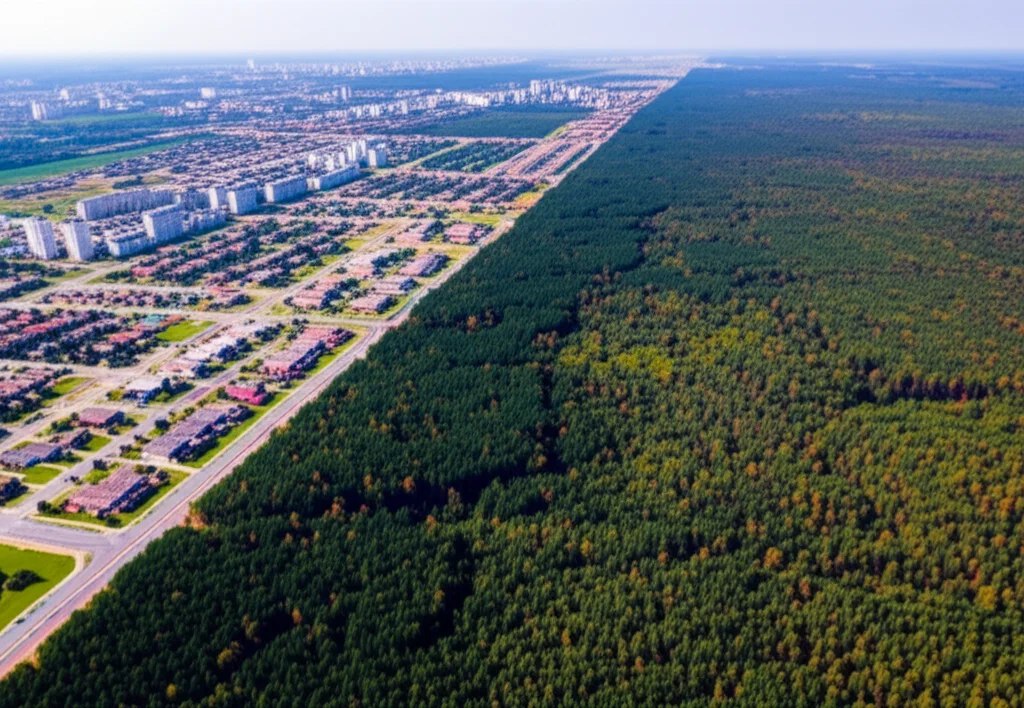Unlocking the Genetic Secrets of Rare Brazilian Trees: A Conservation Story
Hey there! Let’s chat about something super important and, frankly, pretty cool: saving some incredibly rare plants down in the Brazilian Atlantic Forest. We’re talking about two special trees from the *Myrceugenia* family, *Myrceugenia basicordata* and *Myrceugenia joinvillensis*. These aren’t just any trees; they’re endemic, meaning they live *only* in a specific, small part of Santa Catarina state in southern Brazil, and they’re facing some serious challenges.
Think of genetic diversity like a species’ toolkit for survival. The more tools you have (different genes), the better you can adapt to changes – whether that’s a new disease, shifting climate, or your home getting bulldozed for a new housing development. For rare species, this toolkit is often smaller, making them extra vulnerable. That’s where conservation genetics comes in, giving us the insights we need to help them out. It’s like getting a detailed map of their genetic landscape.
The folks who study biodiversity have this neat concept called Essential Biodiversity Variables, or EBVs. These are key things we need to measure to understand the health of life on Earth. One big category is genetic composition, which includes things like how much diversity there is, how different populations are from each other, and how much inbreeding is happening. Getting this info for threatened species, especially the rare ones, is tough but absolutely crucial. The IUCN (International Union for Conservation for Nature), you know, the group behind the famous Red List of threatened species, recognizes the importance of genetic data, but it’s not always easy to use in their assessments.
Meet the Stars: Rare Myrceugenia
So, our study focused on these two rare *Myrceugenia* species. The Myrtaceae family is huge in Brazil, especially in the Atlantic Forest, and its members are super important ecologically – they provide food for animals, are key pollinators, and are even used in restoring damaged areas. But while many common Myrtaceae get studied, these rare ones often fly under the radar.
* *Myrceugenia basicordata* is a small tree, usually only up to 2 meters tall. It hangs out on slopes around 200 meters above sea level, often pretty close to the bustling city of Joinville. Its habitat is right there at the edge of urban expansion, which is a big worry.
* *Myrceugenia joinvillensis* is a bit taller, up to 3 meters, and prefers higher altitudes, between 400 and 700 meters, usually in mature forests but in areas without a dense canopy. It’s found in the same general region but seems to like the mountain edges a bit more.
Both species are considered rare and threatened, and honestly, we didn’t know much about their ecology before this study. We had to do some serious searching – checking online databases, herbarium collections, and hitting the field ourselves in 2022 and 2023. We managed to find and sample individuals from four populations for each species.
Unlocking Genetic Secrets
To figure out their genetic situation, we collected young leaves, extracted DNA, and used some pretty advanced sequencing technology. We developed specific genetic markers called microsatellites for each species. Think of these like genetic fingerprints – they let us see how much variation exists within and between individuals and populations.
We then ran a bunch of analyses. We looked at:
- How many different versions of genes (alleles) were present.
- How genetically diverse each population was (heterozygosity).
- Whether there was evidence of inbreeding.
- How genetically different the populations were from each other.
- If populations showed signs of recent decline (bottlenecks).
- Estimated how many individuals were effectively contributing to the next generation (effective population size).
We used fancy software like Structure and DAPC to visualize genetic clustering and AMOVA to see how variation was distributed. It was a deep dive into their genetic code!

What the Genes Told Us
Okay, so what did we find? Both species showed what we’d call a moderate level of genetic diversity. For rare, endemic species, that’s actually not too bad, but it definitely means they need attention.
* *Myrceugenia basicordata*: This species had slightly lower genetic diversity overall compared to *M. joinvillensis*. Interestingly, the populations closest to the urban center of Joinville (like the one in the urban park) had the lowest diversity. The populations further away, in less disturbed areas, had higher diversity. This really highlights the negative impact of urban life, maybe affecting pollinators or just shrinking their habitat drastically. We saw evidence suggesting that several *M. basicordata* populations, especially one called CUB, might have gone through a historical reduction in size – a genetic bottleneck. Despite this, the genetic differentiation *among* populations wasn’t super strong, suggesting some level of gene flow might still be happening, perhaps historically.
* *Myrceugenia joinvillensis*: This one showed higher genetic diversity and a much clearer genetic structure, meaning the populations were more distinct from each other. We identified four main genetic clusters, largely corresponding to the four populations we sampled. This distinctiveness might be linked to its preference for higher altitudes, where perhaps gene flow is more limited. The population called MUT was the most genetically different and isolated, having the highest number of unique alleles. We didn’t find strong evidence of recent bottlenecks in *M. joinvillensis* populations, suggesting they might be naturally smaller or haven’t faced the same kind of recent, sharp decline as *M. basicordata*.
We also used our findings, along with geographic data and other knowledge, to assess their conservation status according to IUCN guidelines. The result? Both *Myrceugenia basicordata* and *Myrceugenia joinvillensis* qualify as Endangered (EN). That’s a serious classification and underscores the urgency of conservation actions.
Facing the Threats
The biggest threat looming over these species is clear: habitat loss and fragmentation. The area they call home, Santa Catarina, is experiencing rapid population growth and urban expansion. Their habitats are literally being eaten away. Unlike some other plants, these *Myrceugenia* aren’t widely cultivated or economically important, so they don’t have that layer of protection.
On top of that, climate change is a major concern. Rare and endemic species are often less able to cope with changing conditions than more widespread ones. Future projections suggest a significant reduction in suitable habitats for these *Myrceugenia* by the end of the century. It’s a tough picture, and sadly, these two species are likely just the tip of the iceberg for endemic trees in the Atlantic Forest, many of which are already threatened.

Putting Genes to Work: Conservation Plans
So, what can we do? Our study isn’t just about describing the problem; it’s about providing practical steps for conservation. We’ve got recommendations for both the short and long term.
Immediate Steps: Eyes on the Ground (and Genes!)
In the next year or two, we need to focus on understanding them better and keeping a close watch:
- Monitor Populations: We need to keep checking on these populations to see if their numbers are declining. This can be tricky, especially for *M. joinvillensis* up in the mountains. Maybe we can use cool tech like drones or involve local communities in citizen science projects.
- Investigate Basic Biology: We still need to learn the basics! How do their seeds germinate? How do they reproduce? Who are their pollinators? When do they flower and fruit? Understanding these things is vital for any conservation effort.
Long-Term Vision: Saving Seeds, Growing Hope
Looking ahead 3 to 10 years, we can use this knowledge for bigger actions:
- Get Them on Red Lists: Officially including these species in regional and national threatened species lists is crucial. It raises awareness and can encourage restoration projects to use these specific plants.
- *Ex Situ* Conservation and Reintroduction: This means saving them *outside* their natural habitat. We can cultivate seedlings in botanical gardens or nurseries. The goal is to grow genetically diverse plants (maybe avoiding material from the least diverse populations) that can eventually be reintroduced into suitable protected areas to create new populations or boost existing ones.
- Seed Banking: If their seeds can be stored (many Myrtaceae seeds are tricky!), collecting and banking seeds from diverse populations is like creating a genetic backup drive for the species.
Cultivating them in botanical gardens, nurseries, or even private orchards could also help us learn more about them and keep genetic material safe.

Wrapping It Up
Our study is just the first step for *Myrceugenia* conservation genetics in the Atlantic Forest, but it’s an important one. We found that despite being rare, these species still hold moderate genetic diversity. *M. basicordata* seems more impacted by urban proximity and shows signs of past decline, while *M. joinvillensis* has more distinct populations, possibly due to its mountain habitat.
The bottom line is, both species are endangered, primarily because their homes are disappearing due to urban expansion. We need to act now – monitoring them, learning their secrets, and planning for their future through things like *ex situ* cultivation and reintroduction. This work helps pave the way not just for these two species, but hopefully for other rare and overlooked plants in this incredible, but threatened, biome.
Source: Springer







